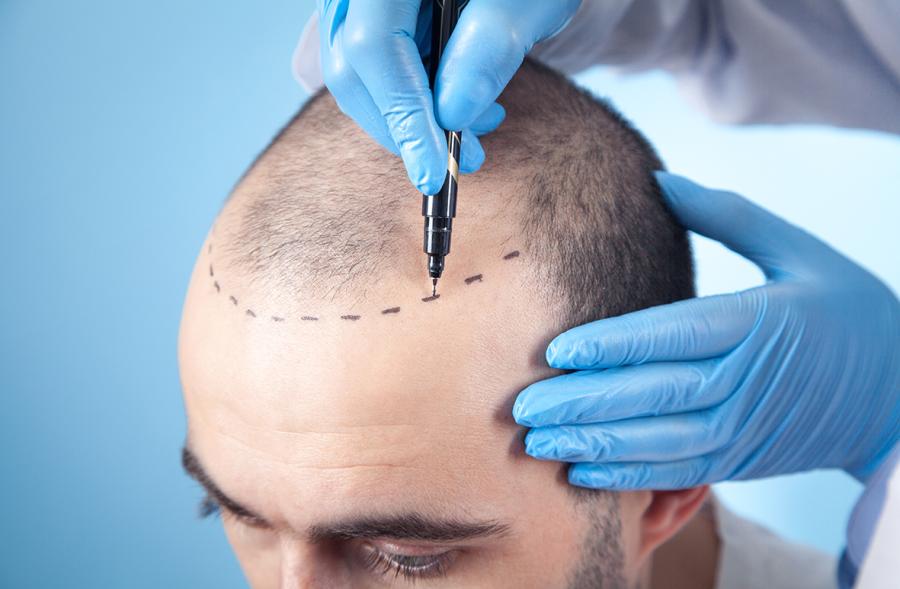
Having a hair transplant is a big decision for a number of reasons. The cost of a high quality hair transplant can be a significant outlay for many people. A well-done hair transplant can be virtually undetectable when performed expertly by an experienced surgeon and team. For optimal results, it is best to choose a board-certified specialist who devotes himself/herself to hair surgery and is familiar and proficient with ‘follicular unit extraction’ (FUE). A bad hair transplant can have major long-term detrimental effects on the patient, both psychological and physical.
What is a hair transplant surgery?
Hair roots that exist in abundance at the back of the head (the donor area) that normally never go bald are removed and placed into the thin and balding areas on the front and top of the head (the recipient area).
There are 2 steps involved in doing this surgery.
Cost of a hair transplant
The cost of carrying out a quality hair transplant is considerable, as the process requires a team of highly skilled medical staff and technicians. There is no low-cost method of providing this level of expertise. Therefore, if the cost of a hair transplant is the principal factor guiding your decision about whether or not to have the surgery, we strongly advise that you consider our unique medical & procedural treatments instead. Having an inferior quality hair transplant carried out can have serious, negative and long-term consequences.
The key to a natural looking hair transplant is good hairline design. Careful design and planning is an essential part of the hair transplant process at RD clinic. Hair transplant done at unqualified centres can give an unnatural-looking hairline.
Hair transplant Design – Things to consider
When designing the hair transplant we take into consideration:
Based on the above factors an outline is drawn that will form the new hairline.
How soon after surgery can I return to work?
Post hair transplant recovery may take 4-5 days. Your surgeon will confirm this at your consultation.
What is the success rate of hair transplant surgery?
In a non-smoker between 95-98% of the grafts will grow successfully provided the highest international standards of surgery are used in the transplant procedure.
What are the complications or risks of the surgery
Hair transplantation is an extremely safe out-patient procedure that is normally without significant risks or complications. However, as is the case in any surgery, there are risks, and these are always presented and discussed in detail at your personal consultation with our qualified surgeon.
What are the potential side effects or complications?
There are some minor, temporary complications such as :
Temporary thinning of pre-existing Hair
Although rare, after the surgery some pre-existing hair can thin. The pre-existing hair will return to normal, full condition within a few months of the surgery.
Pain
Pain is fairly minimal. Half of our patients do not require any pain relievers. In some patients a dull aching pain may last for 1-2 weeks
Numbness
Some transient numbness is inevitable, usually in the donor area, and generally lasts from 3 to 18 weeks.
Itching
Some itching commonly occurs but is rarely troublesome and lasts only a few days. Shampooing the hair daily will help the discomfort. Bleeding
Some bleeding is normal and will stop with simple pressure.
Hiccups
Hiccups may occur after surgery. The cause is not known. The incidence of this complication is about 5%. It usually lasts several hours to several days.
Swelling
There is rarely any swelling. When there is, it can affect the forehead and the area around the eyes and last 1 to 2 days. In about 1% of cases, a “black eye” can develop.
Infection
This happens in one in several thousand cases and is easily treated with antibiotics.
Scarring
Keloid scarring occurs only in pre-disposed individuals.
Cysts
One or more cysts may occur in the recipient area when many grafts have been inserted. They usually disappear by themselves after a few weeks or immediately with various simple treatments.
Necrosis of skin
It is an extremely rare complication, seen in patients with a compromised blood supply such as in smokers.
What should first be done before considering a hair transplant?
Before the procedure, a doctor at RD clinic will review the patient’s medical history. This is the time for the doctor and patient to discuss expectations, potential risks and outcomes of the procedure. Patients should:
© Copyright RD Clinic. All Rights Reserved